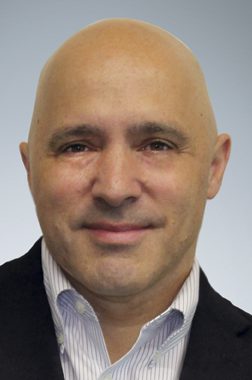LIFE INSURANCE: AN UNDERUSED ARROW IN THE INDEPENDENT PRODUCER’S QUIVER
Consumers have serious, long-term financial needs that your protection products could help them meet
By Jack Calabrese
Questions that have stumped the world’s greatest thinkers include: What is the meaning of life? Why do we exist? Another pressing, though less philosophical, question is, “How do you get property and casualty producers to consistently write life insurance on new and existing customers?”
Interestingly, many P-C producers are already doing most of the hard work: They market, prospect and take the time to build rapport and develop relationships. With these efforts they earn the opportunity to quote and perhaps write auto and homeowners applications to protect their clients’ larger assets. Yet for some reason, many producers don’t go the extra step to ensure that their clients’ most important asset, their income, is protected.
It’s a bit of a Catch-22—some producers don’t sell life insurance because they don’t feel comfortable with the products or the underwriting process. They believe they may be compromising their credibility as insurance professionals and risk losing the P-C sale, so they don’t bring it up. As a result, they never develop an understanding of how the products work, how to explain them, and the costs or benefits.
Another reason some producers don’t cross-sell life insurance is that they’re simply too busy. They want to provide the best service possible, so they spend much of their time keeping exisiting clients satisfied to reduce rate shopping at policy renewal. Consequently, they may not be doing the best job for their clients and families.
Knowledge gap
Most producers understand that having life insurance should bring comfort and confidence to clients who know their final expenses will be covered and that their loved ones will be provided for. But evidence suggests that producers don’t fully understand these needs.
According to its website, GoFundMe.com has more than 125,000 memorial campaigns running per year to help pay the final expenses of a loved one. What’s wrong with this picture? Families cannot afford funerals because many no longer prioritize an investment in life insurance. The client’s pain when purchasing a life insurance policy, however, is ultimately much less than the pain and guilt he or she feels about leaving the family in debt.
McKinsey research indicates that mass-market Millennials (aged 18–34), mass-market Generation Xers (aged 35–54), and middle-market Baby Boomers (aged 55 and older) represent the next horizon of growth for the industry. Among the 68 million such households in the United States, 57% do not own individual life insurance.
Why? The underlying reason is that the distribution model has changed. A decade or two ago, many life insurance companies employed men and women who were incentivized to make cold calls, knock on doors and spend evenings at kitchen tables educating prospects and trying to sell life insurance. As the years passed, with mergers, acquisitions and a focus on efficiencies, companies eliminated the captive field forces that took this proactive approach.
McKinsey also reported that 53% of American workers aged 60 or older are not financially prepared for retirement. This points out the need for financial wellness education at all life stages. The report also noted that mass-market and middle-market consumers are interested in products to protect their long-term financial security. These individuals are generally trying to save money, and two in three are financially insecure. In short, these consumers have serious, long-term financial needs that life insurance products can help them address.
By asking, “When was the last time someone took a look at your personally owned life insurance,” producers can open the door to a dialogue that transforms them from salespeople to advisers who take a holistic approach to managing risk.
Life insurance is a product that largely needs to be sold. I believe that, as insurance professionals, we need to do a better job of raising awareness and educating clients about protecting their incomes for themselves and their families.
When speaking to producers at industry events, I always play a game with my audience. I ask producers to raise their hands to indicate how many times they have been asked to purchase life insurance by a life insurance professional, counting from ten down to zero. Every time I do this, I’m alarmed by how many hands are raised at zero.
Then I ask how many times they have proactively sought to purchase their own life insurance coverage, (outside their group life coverage), counting from ten down to zero. Again, I’m usually alarmed by the number of hands that are raised at zero.
My audience experiments are a microcosm of the larger population of producers and their prospects and clients. Producers are busy selling and servicing their core P-C business. They must recognize that when they don’t take the time to mention life insurance to a client or prospect, they may not have another opportunity.
When a client or prospect says he or she has group life insurance at work, producers should see an opportunity to educate them about how employer-sponsored group coverage works. Many clients do not realize they have limited control over their policy because they don’t own it. Most people who rely solely on group life don’t know that the coverage may not be portable or that their protection may be significantly cut or eliminated when they retire.
Again, discussing needs is the responsibility of the producer. By asking, “When was the last time someone took a look at your personally owned life insurance,” producers can open the door to a dialogue that transforms them from salespeople to advisers who take a holistic approach to managing risk. This practice likely will result in additional sales and improved retention.
Selling life insurance and financial solutions to commercial accounts is also critical. I recently spoke with an industry expert who said if you consider a producer who focuses on commercial accounts, think about that producer’s top ten clients. What would happen if one of the owners or a key person were to pass away? There’s a good chance the business would be at risk if there isn’t a succession plan in place with a buy-sell agreement or key person policy funded with life insurance. This could put your client’s company out of business and bankrupt those who started it.
As you’re reading this, you’re probably hoping to learn strategies to influence and inspire producers to cross-sell life insurance products. Having worked with many distribution systems, I’ve learned that marketing alone is not the solution, nor is providing producers effective training.
Many carriers are introducing technologies and underwriting approaches that make it much easier for the producer to sell a policy and for the client to purchase it. Even with these advances, the challenge of how to motivate producers to go down this road will persist. Consistent effort will be required to move the needle.
The bottom line: If you’re not asking your clients about life insurance, someone else will! Don’t bypass this opportunity to round out accounts and enhance your client relationships. Employ multiple ways to educate your clients and build awareness, and proactively sell this important product. Do this for the betterment of your client’s financial legacy as well as for the long-term strength of your business.
 The author
The author
Jack Calabrese is senior vice president of the life insurance division at SIAA. He can be reached at jackc@siaa.net.





